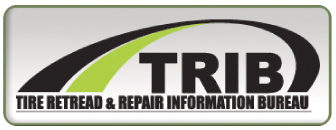
TIRE RETREAD MYTHS

Myth: Rubber on the road comes from retreaded tires.
Fact: The rubber pieces you see on the road come from both new and retreaded tires in equal proportions to their usage on roads. Multiple Federal and State studies have proven this fact and that most of the rubber on the road comes from truck tires and is caused mainly by under inflation, overloading, and tire abuse.
Myth: Retreaded tires are not as safe as new tires.
Fact: Retreaded tires as just as safe as new tires. Adjustment percentages of retreaded tires are about the same as new tires. Statistics compiled by the U.S. Department of Transportation show that nearly all tires involved in any tire related accidents are under inflated or bald. Properly maintained tires, whether new or retreaded, do not cause accidents. Retreaded tires are used safely everyday by ambulances, fire engines, school buses, and aircraft.
Myth: There aren't any standards that control the quality and safety of retreaded tires.
Fact: Yes, there are. Passenger, light pick-up, and 4x4 tires are retreaded according to standards established by the U.S. Department of Transportation and carry a code number (**) on the sidewall indicating where and when the tire was retreaded. Due in part to the standards established by the truck tire retread industry, the U.S. Department of Transportation has not developed regulations for manufacturing retreaded truck tires. The overall quality of retreaded truck tires has increased dramatically in recent years with the introduction of advanced technology including the use of
computers in manufacturing and non-destructive tire testing.
Myth: Retreaded tires can't be driven at highway speeds.
Fact: Yes, retreaded tires can be driven at the same legal speeds as comparable new tires with no loss in safety or comfort.
Myth: There are certain driving conditions where retreaded tires should not be driven.
Fact: Retreaded tires can be driven wherever comparable new tires can be driven. The only restriction is on the steer axle of buses hauling passengers.
HOW A TIRE IS RETREADED
Basically, there are two systems used to retread a tire, Mold Cure and Pre Cure.
The reason both systems exist is because of the economics of operating a retread plant and have nothing to do with the quality of the finished product. Each system has unique advantages but both systems produce equally good retreaded tires.
The initial steps in retreading a tire are the same regardless of which retreading system is used. These steps are:
1. Primary Inspection. Each tire received in a retread plant is subjected to a very rigorous visual inspection. Inspectors may be assisted by the use of various non-destructive sophisticated inspection equipment available in the retread industry. As many as 85% of passenger tires are rejected. The acceptance rate for truck tires is higher due to the better care taken for and the stronger construction of a truck when compared to a passenger tire. Only the very best proven worn passenger and truck tires get past this inspection.
2. Buffing. After inspection, tires have the old tread mechanically removed on high speed buffers. Today's buffers are extremely accurate and will remove the proper amount of old rubber while truing the tire to an exact specified diameter and radius.
3. Application of new rubber in the tread area. Here is where the systems differ.
a. In the pre cure system the tread rubber has already been vulcanized with the new tread design. The buffed tire has a thin layer of cushion gum wrapped around the tread area and the pre cured tread is then applied. The cushion gum serves to bond the pre cured tread to the tire. The tire is then placed in a curing chamber and the pre cured tread becomes adhered to the tire through a vulcanizing process very similar to that used in new tire construction.
b. In the mold cure system, unvulcanized tread rubber is applied to the buffed tire. The tire is then placed into a rigid mold which contains the tread design in the tread area. The mold is heated and the rubber in the tread area vulcanizes and adheres to the tire with the new tread design molded in. Again, this vulcanization process is very similar to that used in new tire construction.
Note: Both systems require a combination of time, heat and pressure to create the vulcanization of the new rubber to the tread area of the tire.
4. Final inspection.. The retreaded tire is subjected to a final inspection. This inspection insures that only tires that meet industry quality standards are allowed to leave the retread plant.
5. Trimming and painting. The retreaded tire that successfully has passed the final inspection is trimmed to remove any excess rubber and painted. It is then ready to return to full service and a second (or third) life as a safe and economical alternative to high priced new tires.
6. Nail hole and section repairs: When required, nail hole and section repairs are performed within the retread industry repair guidelines. These repairs are made using the latest technology and proven repair materials. A properly repaired tire can be put back in full service.